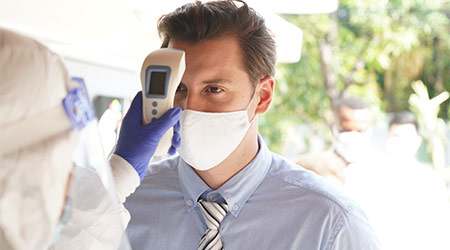Nearly everything in healthcare facilities has changed in the last year in response to COVID-19. In some cases, things have changed several times. Consider the case of entryways, where facility managers have updated and adapted procedures and processes repeatedly as the pandemic unfolded.
Temporary physical changes might include installing temporary barriers, creating temporary screening locations, repurposing spaces, using temporary structures and more. Often, these changes create situations that are not in strict compliance with NFPA 101, Life Safety Code, according to Health Facilities Management.
Organizations should already have in place a process to assess the need for and implement Alternative Life Safety Measures (ALSM) or, in Joint Commission-accredited facilities, Interim Life Safety Measures (ILSM). Managers can use the life safety risk assessment and mitigation process already in place, as physical changes are anticipated in response to the pandemic. For facilities that have an ALSM or ILSM risk-assessment process already in place, use that as the foundation.

 UF Health Hospitals Rely on Green Globes to Realize Their Full Potential
UF Health Hospitals Rely on Green Globes to Realize Their Full Potential How Healthcare Facilities Can Be Truly Disaster-Resilient
How Healthcare Facilities Can Be Truly Disaster-Resilient TriasMD Breaks Ground on DISC Surgery Center for San Fernando Valley
TriasMD Breaks Ground on DISC Surgery Center for San Fernando Valley Bigfork Valley Hospital Falls Victim to Data Breach
Bigfork Valley Hospital Falls Victim to Data Breach AI-Driven Facilities: Strategic Planning and Cost Management
AI-Driven Facilities: Strategic Planning and Cost Management